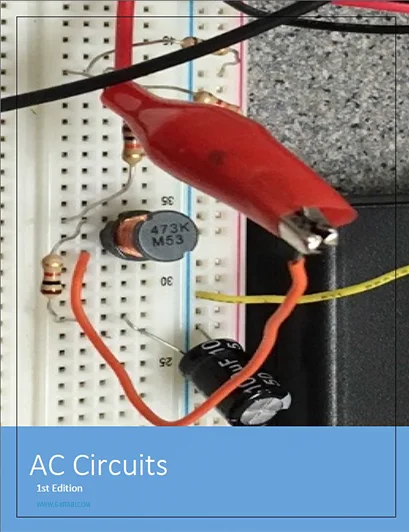What is an AC Circuit?
An AC (alternating current) circuit is a circuit through which an electric current flows in both directions. Unlike DC (direct current) circuits where the current flows in one direction, AC circuits have a constantly changing direction of current flow. This back-and-forth movement of current is what powers our homes, electronics, and industries.
Components of an AC Circuit
AC circuits consist of various components that work together to facilitate the flow of alternating current. These components include resistors, capacitors, inductors, and power sources such as generators or power plants. Each component plays a crucial role in maintaining the stability and efficiency of the circuit.
How Do AC Circuits Work?
In an AC circuit, the current alternates direction periodically, following a sinusoidal waveform. This constant change in direction allows for efficient transmission of electricity over long distances without significant loss of energy. The voltage and current in an alternating current circuit vary with time, leading to the generation of power that can be harnessed for various applications.
Advantages of AC Circuits
One of the key advantages of AC circuits is their ability to transmit electricity over long distances with minimal energy loss. This makes AC circuits ideal for powering homes, businesses, and industries located far from power generation sources. Additionally, AC circuits are more adaptable and versatile compared to DC circuits, making them suitable for a wide range of applications.
Challenges in AC Circuit Analysis
Analyzing AC circuits can be complex due to the sinusoidal nature of voltage and current waveforms. Understanding concepts such as impedance, phase angle, and resonance is crucial for accurate circuit analysis and design. Engineers and technicians often use specialized tools and software to simulate and optimize alternating current circuits for optimal performance.
AC circuits play a vital role in powering our modern world, enabling the efficient transmission of electricity for various applications. By understanding the fundamentals of alternating current circuits and their components, we can appreciate the complexity and versatility of alternating current technology. Whether it’s lighting up our homes or running industrial machinery, Alternating current circuits continue to shape the way we interact with electricity on a daily basis.
About the Book
This new edition has been thoroughly revised and updated by the authors to reflect the latest information on electronics. Understanding AC Circuits is designed with the electronics beginner and student in mind. The authors use a practical approach exposing the reader to the systems that are built with alternating current circuits making it easy for beginners to master even complex concepts in electronics while gradually building their knowledge base of both theory and applications. Each chapter includes easy-to-read text accompanied by clear and concise graphics fully explaining each concept before moving on to the next.
The authors have provided section quizzes and chapter tests so the readers can monitor their progress and review any sections before moving on to the next chapter. Each chapter also includes several electronics experiments, allowing the reader to build small circuits and low-cost projects for the added bonus of hands-on experience in AC electronics.
Understanding AC Circuits fully covers dozens of topics including single-phase and three-phase AC electronics; electrical generator basics; how to use a multimeter and oscilloscope in AC electronics; troubleshooting and testing circuits; tools and equipment; resistive circuits; inductive circuits; capacitive circuits; vector diagrams; series circuits; transformers; filter circuits; resonant circuits; decibels; wave-shaping control; electronic symbols; soldering techniques; plus much more.
HVAC Licensing Study Guide, Third Edition 3rd Edition
This book deals with alternating current AC circuits and a brief introduction to electronics. This book is divided into seven modules. Module 1 covers the theory of AC signals. Since the first e-book uses only a DC power source, the details of alternating current signals such as sine (or sine), square, and triangle waves are provided. Module 2, titled AC Circuits Math Background, deals with the mathematics needed to solve AC circuit problems. The background from Modules 1 and 2 is combined in Module 3 to solve AC source circuits (RLC circuits) with resistors, inductors, and capacitors.
The circuits in this eBook were created using an easy-to-use circuit drawing and simulation tool called Multisim. Creating new circuits and simulating them to verify that the calculations are correct is a good way to hone your circuit analysis skills. This book explains how to verify the results of calculations in Multisim, allowing the reader to verify results while creating more complex problems.
This is extremely important because complex algebraic calculations are very tedious in alternating current circuits, and students learning problem-solving techniques frequently make mistakes. The DC Circuits eBook made extensive use of DC probes and multi-meters, but this eBook uses AC probes, and MultiSim oscilloscopes are also used to make more complex AC measurements.


Interested in books
We hope you find something that pleases you here
screenplay xyandanxvurulmus.qvrUIXIDojtm